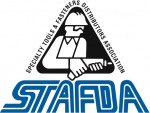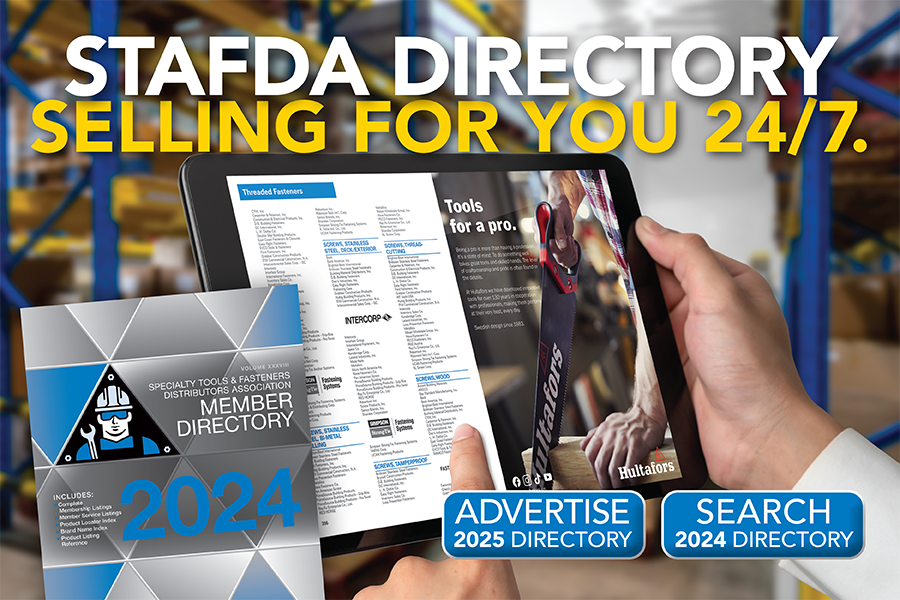STAFDA Cash Flow Consultant Abe WalkingBear
Who are your customers' customers?
 Today more than ever your cash flow depends on who your customers are selling to. Past due credit customers often say that they will pay when they get paid, when their own credit customers pay them.
Today more than ever your cash flow depends on who your customers are selling to. Past due credit customers often say that they will pay when they get paid, when their own credit customers pay them.
Getting paid by credit customers can be kind of like the game of Whip that we played as kids where a group would line up, link arms, and run a little and then the leader suddenly stopped and whipped around the next kid in line who in turn whipped the next kid and so on. And if you were the last kid in line you’d go flying. The supply chain is like that, with each down-line credit customer telling up-line creditors that they will pay when they’re paid by their own customers, and you don’t want to be the last kid in the payment chain.
 So what to do?
So what to do?
The first thing, before you extend credit to customers, find out who your customers are selling to, who are their down-line customers. You don’t need the names of their down-line credit customer, although that might come in handy, but you need to know their industry and, if they in turn have down-line credit customers, their customers’ industry, too.
For example, let’s say that your credit customers add value to the product or service they buy from you and then sell to the auto industry. With GM and the other car guys having 40
percent drops in their sales, chances are good that those customers are now buying less and taking longer and longer to pay. Unless of course they are selling to the automobile aftermarket in which case they will most probably be buying more as older cars are repaired and not replaced with new ones.
The same might be true if your customers are in construction or construction related fields, at least until all that federal money for bridges, highways and schools kicks in.
Of course before extending credit you still want to weight the potential credit customers’ time in business, type of business, business status, past payment history and your product value at time of sale, i.e. margin, demand, capacity.
Remember, the goal of credit approval is to find a way to say yes to profitable sales while remaining confident of payment.
The next thing you need to find out, before you extend credit to new customers, is what their credit terms are to their down-line credit customers. If you are looking at selling to a credit customer who extends 60 day terms while your own up-line creditors are only giving you 30 day terms you may soon find yourself on credit hold and your own past payment history blemished. You want to control the whip and not be the whipped.
One last point, although it doesn’t deal directly with who your credit customers are selling to, is that you need the right person on the job working with your credit customers.
Some years ago, during the last economic downturn, a national manufacturer had me going around to their “gold circle” distributors and training them on how to do a better job of managing their down-line credit approval and A/R management.
The first thing I do before starting any in-house training program is to take the credit manager aside and explain that I am not there because of anything they have done or failed to do. I explain that they are the true experts because they know their corporate culture, their customer base and the local economy better than any outsider and that I will acknowledge their expertise to the CEO and all those others involved in the training.
At one distributor in northern California, I took the credit manager, Mary, aside and told her she was the expert and that during the training program, which was being attended by the CEO and senior managers, I’d be calling on her for specifics to complement my copyrighted Profit System material.
It didn’t work at all well. If I asked a specific question she’d sit there arms crossed and say nothing. At other times she’d break in to the presentation to complain about something or someone. Had I done something in a past life to deserve this?
Over lunch the general manager told me that Mary use to be the telephone receptionist but that she was so mean and nasty to customers they had moved her into collections and in time, after everyone else in the department had quit, she became the credit manager. Wrong guy for the job!
On the drive to the airport, the CEO and I talked about what kind of person they needed in credit and, as for Mary, perhaps she’d be happier elsewhere.
I won’t leave you hanging and not tell you what you should look for in good credit and A/R managers but first, because I love to tell this story, I’m going to tell you about an employee of mine when I owned a collection agency who was the right guy for the job.
A partner and I started a collection agency from scratch and were having a tough time making a go of it until my partner hit on a great sales idea. When banks and credit unions had a car loan go bad they’d contract with a repo company to have it picked up. They’d then take bids and sell the repo to the highest bidder and if there was a deficiency balance still due and owing they’d place the account with a collection agency and we had to compete for that business.
Repo man
Well, my partner’s great idea was that we could do it all. We’d repo the car, we’d take bids and sell it and if anything was still owing we’d collect it. We ended up with a car lot. However, we did have a problem finding and keeping good repo guys. Big guys with low foreheads, long arms and jailhouse tattoos didn’t last long; they’d miss an appointment with their probation officer and they were gone.
The best repo guy we ever had was a short man with no tattoos. An older guy in his mid-thirties, he must have been a “Mountie” RCMP in a prior life because he always got his man or, in this case, the repo.
One night while taking a car he was shot at, but not hit. The next day in the office I asked him if maybe he wasn’t getting a little old for the job: I was in my twenties at the time and being in your mid-thirties seemed a long way off. Without hesitation he said to me, “When I was a kid I’d steal cars and the cops would lock me up. Now I can steal all I want and you pay me well to do it.” Passion: the man loved what he did; he was the right guy for the job.
Now, as promised, what should you look for in good credit and A/R people? First and foremost credit and A/R management people should be very good communicators and they should also be good at establishing and maintaining relationships. Stay away from guys with an ego problem or a chip on their shoulder for they will cost you dearly in lost customers, upset employees and additional legal expenses. Good salespeople make good credit people; they have all the right skills and only need training in the right methodology.
The lubricant of commerce
Credit is the lubricant of commerce and allows for the expanded movement of products and services. The current economic problems are not so much related to the use of credit but rather to the misuse of it by some to commit fraud. The lack of credit, of the lubricant, has caused the machine of business to slowly grind down, creating a downward cascading effect on commerce and on companies being paid money due to them by their credit customers.
Things will get better, after they get worse. The goal is to survive to see that better time coming. It’s time for new efficiencies in key areas of business, including credit and A/R management. It’s time to move away from different areas within a business thinking, speaking and acting as if other areas of the business are the enemy. It’s time to embrace the change and meet the challenge facing American businesses.
At a time of a shrinking economy, more than ever you need to know what you are getting into before you extend credit or you may find your self sailing through the air. While that can be fun, the landing can hurt. CS
Abe WalkingBear is an International speaker/trainer/consultant on cash flow, sales enhancement and business knowledge organization. Co-founder of www.profitinnercircle.com, and president of www.abewalkingbear.com, he is the author of Profit Centered Credit and Collections, 1999, co-author of STAFDA’s Foundations of a Business, 2007, and co-author of The Best Kept Profit Secret: The Executive’s Guide to Transforming a Cost Center, 2009. Reach him at 719-276-0595; abe@abewalkingbear.com; www.abewalkingbear.com.














